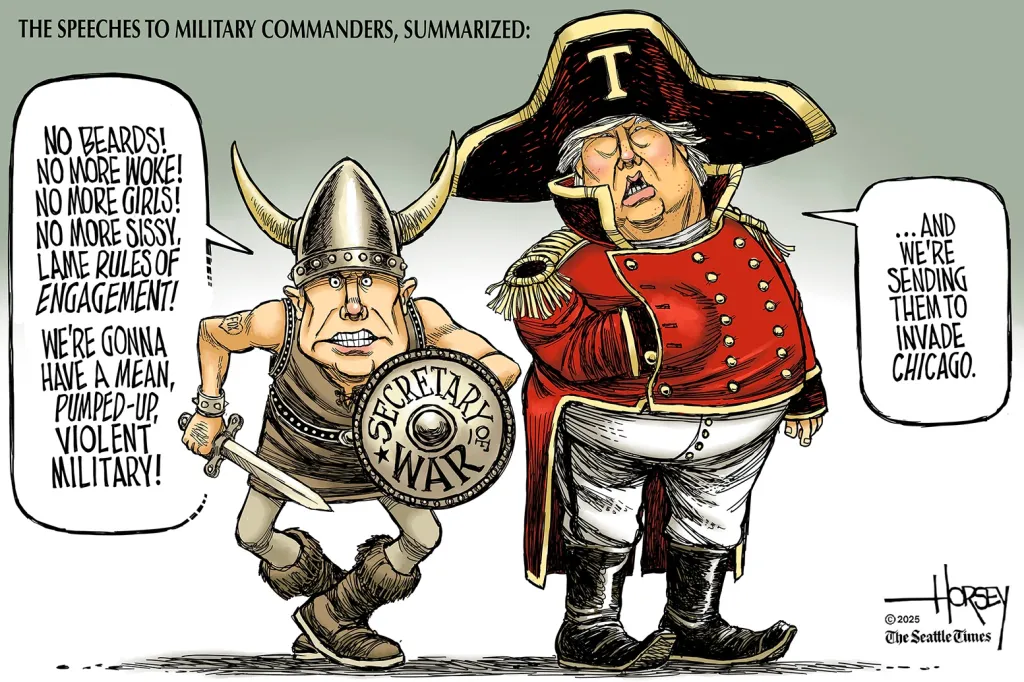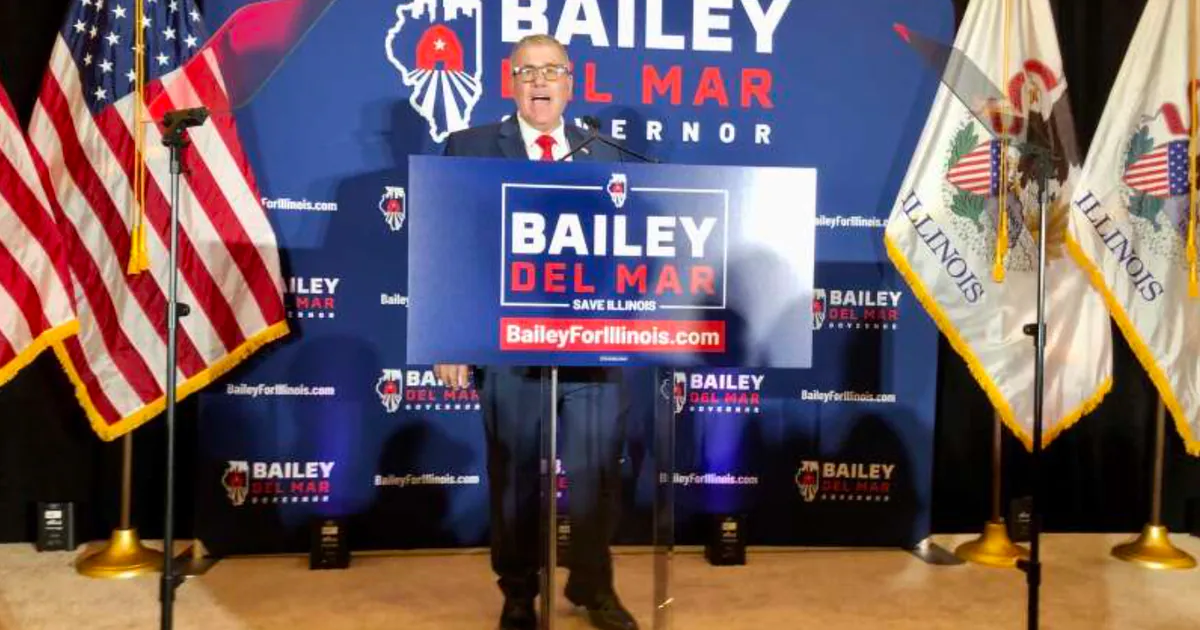
Here’s the scariest part about Tuesday’s military pep rally: President Donald Trump and Defense Secretary Pete Hegseth — in their focus on grooming, fitness standards and “the enemy within” — seem oblivious to the reality that 21st-century combat will be dominated by drones and artificial intelligence, plus commanders who understand these high-tech weapons.
America’s generals and admirals sat stone-faced as they listened to Trump and Hegseth. They had been summoned to Washington at a moment when they’re struggling to adapt America’s military to dizzying changes in combat systems and doctrine. What they got was a lecture from Hegseth about the threat of facial hair, “fat generals” and lax training — along with a meandering speech from Trump bashing his political enemies.
Trump’s and Hegseth’s speeches were an exercise in military nostalgia. Trump talked about bringing back battleships, a Navy fighting platform that was already outmoded during World War II. Hegseth urged military leaders to apply “the 1990 test” — meaning any standard that had changed since then was suspect. He celebrated generals of the last century — George Patton and Norman Schwarzkopf — who shared his flair for showmanship.
Watching this political theater, the audience of senior military leaders was properly silent. They applauded, politely, at the end. But what must they have thought about the directives they received from a defense secretary whose views were shaped as a National Guard officer in Iraq 20 years ago and a commander in chief who avoided service because of a medical exemption?
The implicit message of Tuesday’s “key leaders all-call,” as it was officially termed, was to get on board with Team Trump or get out. “If the words I’m speaking today are making your heart sink, then you should do the honorable thing and resign,” said Hegseth. Hopefully, those gathered at Marine Corps Base Quantico will ignore that guidance. It would be a national disaster to lose the battle-tested leaders who understand the military’s true challenges in the decades ahead.
For Trump and Hegseth, the issues facing the military seem more symbol than substance. Thus, their emphasis on rebranding the enterprise as the Department of War. And their endless rehashing of culture-war issues: “No more identity months, DEI offices, dudes in dresses. No more climate change worship. No more division, distraction or gender delusions,” said Hegseth.
OK, got it. Clear away the modest elements of “woke” culture that developed in the Pentagon. But what are you building for the future?
Hegseth is so intent on creating a tough military that having a smart one appears secondary. He wants to restore the old-time, gung ho imagery. Basic training that’s “scary, tough and disciplined.” Drill sergeants who can “instill healthy fear” and “put their hands on recruits.” Hegseth seems convinced that how soldiers fight depends on how they look. “The era of unprofessional appearance is over,” he said. “No more beardos.” Maybe he doesn’t remember the unshaven “dogfaces” of Bill Mauldin’s cartoons during World War II.
Hegseth wants to overturn more than grooming standards. Among the 10 directives he issued Tuesday is a review of standards for bullying and hazing, so that leaders can “enforce high standards without fear of reprisal.” Yikes. That sounds like a blank check for behavior that could drive away, say, the math-and-science whiz who could design and operate future combat systems.
Another unpinned grenade is Hegseth’s directive to revise an inspector general process that he claimed has been “weaponized, putting complainers, ideologues and poor performers in the driver’s seat.” If a commander makes “honest mistakes,” those can be expunged from their record. For the military, Tuesday was “liberation day,” he said. “We are attacking and ending the walking on eggshells and zero-defect command culture.”
Hegseth’s vision of a hard-ass military might be compelling if you believed that future combat would be a reprise of landing on Omaha Beach or Iwo Jima. But the nature of military conflict is changing – on the drone-saturated battlefields of Ukraine and in the scenarios for deterring a tech-savvy China in the future. Beijing would be delighted if America focused on how many push-ups a soldier can do rather than how many computer tools he or she can use.
There was a broader conceptual failure in Tuesday’s presentations. Trump focused repeatedly on using the military to fight the “enemy from within,” by which he seemed to mean illegal immigrants and perhaps also the “radical left lunatics” who might sympathize with their plight. Using the military for domestic law enforcement is illegal under the 1878 Posse Comitatus Act. But beyond that, it’s just dumb at a time when Russia and China pose a growing military threat to the United States.
The military commanders in Trump’s audience are obliged to obey a commander in chief’s orders — so long as they are legal. What did those senior officers think as Trump explained to them his rules of engagement for domestic protest — “They spit, we hit” – and his repeated claims that “we’re under invasion from within”? Hopefully, they’ll seek good legal advice about what constitutes a proper order for deployments on U.S. soil.
The U.S. military is a jewel. Trump and Hegseth are right about that. Its excellence is rooted in values that transcend politics. As the U.S. Military Academy at West Point motto puts it: “Duty. Honor. Country.” Each of the people who listened to Trump and Hegseth swore an oath to the Constitution — and they aren’t promise breakers, no matter who’s leaning on them.
David Ignatius is a columnist for the Washington Post.



